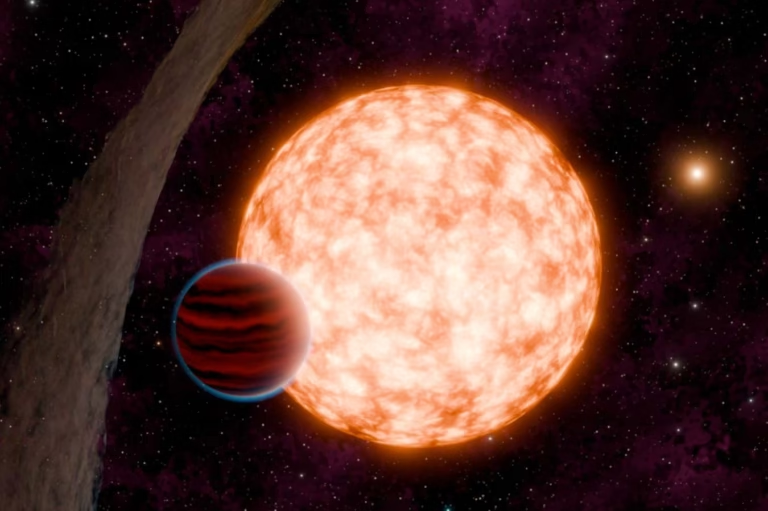
Artist’s depiction of a star system showing the host star, transiting planets, and misaligned protoplanetary disks
NASA/JPL-California Institute of Technology/R. Hart, K. Miller (California Institute of Technology/IPAC)
The world observed orbiting a 3-million-year-old star about 520 light-years from Earth is one of the youngest known planets and provides insight into early planet formation. It’s a clue.
This star is an early stage dwarf star, much fainter and less massive than the Sun. Its age is estimated by comparing the intensity and wavelength of the light it emits with that of other stars.
Madison Barber of the University of North Carolina at Chapel Hill and her colleagues studied the star using NASA’s Transiting Exoplanet Survey Satellite (TESS). They noticed the starlight falling as the planet passed in front of them, and discovered a planet with about one-third the mass of Jupiter and 10 times the diameter of Earth.
The world’s mass and size suggest that it is either a large rocky planet known as a super-Earth, or a small gas giant called a sub-Neptune that is in the process of forming.
The Earth is thought to have formed around 4.5 billion years ago, taking 10 million to 20 million years to form, Barber said. “So it was kind of surprising that we could see something 3 million years later.”
This system is also notable for the fact that a protoplanetary disk of dust and gas still exists. This means that stars and planets are still forming, but their disks are oddly misaligned out of the plane of the system for reasons that are not clear. . “We don’t really know what caused the misalignment,” Barber said. “Stellar flight may have occurred during the formation of the star system.”
The planet is very close to its star, orbiting it every nine days, which is also puzzling because it’s unclear whether planets can form this close. They may move inward over time, as is thought to have happened in our solar system when several giant planets collided in search of position. “This suggests that rapid planetary movement is real,” Barber said.
We know about other young planets, but they tend to be much larger worlds. This could provide a more detailed picture of how the worlds of our own solar system came into being. “We’re trying to infer from these other worlds how quickly planet formation took hold in the early solar system,” says Melinda Soares Furtado of the University of Wisconsin-Madison.
Some young stars have been observed to have gaps in their protoplanetary disks after just 500,000 years, suggesting the presence of planets forming “parallel to their host stars,” she says.
“Things seem to happen early on,” Soares-Furtado said. “So it’s really great to be able to take a snapshot of a system like this.”
topic:

